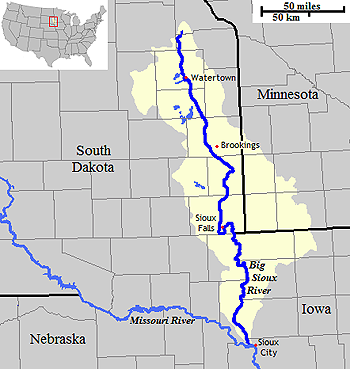Controversy erupted in Sioux Falls, South Dakota yesterday when the East Dakota Water Development District proposed warning signs that would advise swimmers, paddlers and other recreational users about excessive bacterial pollution of the Big Sioux River.
 Sioux Falls Mayor Mike Huether opposes the plan. In a statement that reveals as much about the troubled river’s past as its present he told the Argus Leader, “We don’t need a bunch of expensive and obtrusive signage to remind us what only makes common sense.”
Sioux Falls Mayor Mike Huether opposes the plan. In a statement that reveals as much about the troubled river’s past as its present he told the Argus Leader, “We don’t need a bunch of expensive and obtrusive signage to remind us what only makes common sense.”
A 1973 study by the United States Environmental Protection Agency found the Big Sioux highly contaminated with municipal, industrial and agricultural wastes. A 2012 study by Environment America found the same and named the Big Sioux the 13th most polluted river in the nation.
The 419-mile long Big Sioux River originates in South Dakota, flows to Iowa and, in part, forms the boundary between the two states. A tributary of the Missouri River, its watershed encompasses 7,280 square miles and includes part of Minnesota as well. The Big Sioux is not part of the EPA online database of swimming advisories, which only includes coastal and Great Lakes waters.
For more information on the Clean Water Act’s failed July 1, 1983 policy goal regarding water and recreation: EarthDesk July 1, 2014 and EarthDesk July 1, 2013.










Trackbacks/Pingbacks